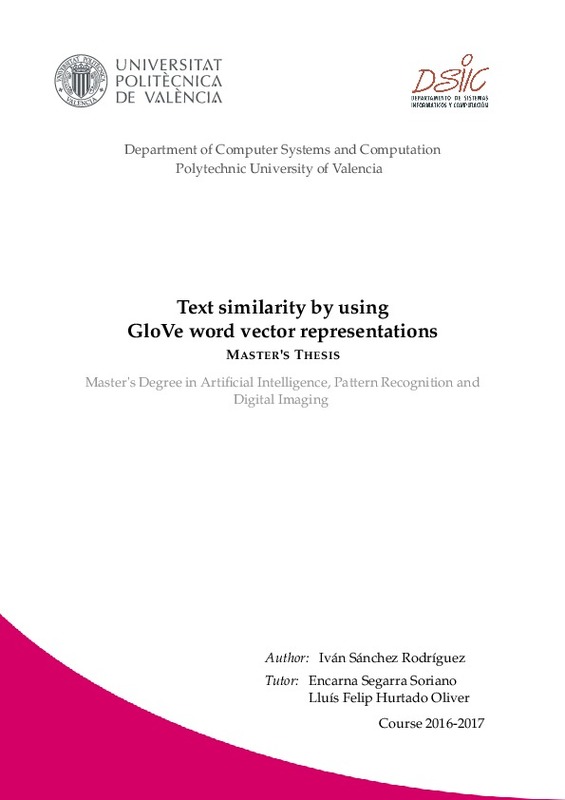JavaScript is disabled for your browser. Some features of this site may not work without it.
Buscar en RiuNet
Listar
Mi cuenta
Estadísticas
Ayuda RiuNet
Admin. UPV
Text similarity by using GloVe word vector representations
Mostrar el registro completo del ítem
Sánchez Rodríguez, I. (2017). Text similarity by using GloVe word vector representations. Universitat Politècnica de València. http://hdl.handle.net/10251/90045
Por favor, use este identificador para citar o enlazar este ítem: http://hdl.handle.net/10251/90045
Ficheros en el ítem
Metadatos del ítem
| Título: | Text similarity by using GloVe word vector representations | |||
| Otro titulo: |
|
|||
| Autor: | Sánchez Rodríguez, Iván | |||
| Director(es): | ||||
| Entidad UPV: |
|
|||
| Fecha acto/lectura: |
|
|||
| Resumen: |
Word embeddings are word representations in the form of vectors that allow to maintain certain semantic information of the words.
There exist different ways of taking profit of the semantic information the words have, as ...[+]
Los word embeddings son representaciones de palabras en forma de vector que permiten mantener cierta información semántica de estas.
Existen diferentes maneras de aprovechar la información semántica que las palabras tienen, ...[+]
|
|||
| Palabras clave: |
|
|||
| Derechos de uso: | Reconocimiento - Compartir igual (by-sa) | |||
| Editorial: |
|
|||
| Titulación: |
|
|||
| Tipo: |
|







